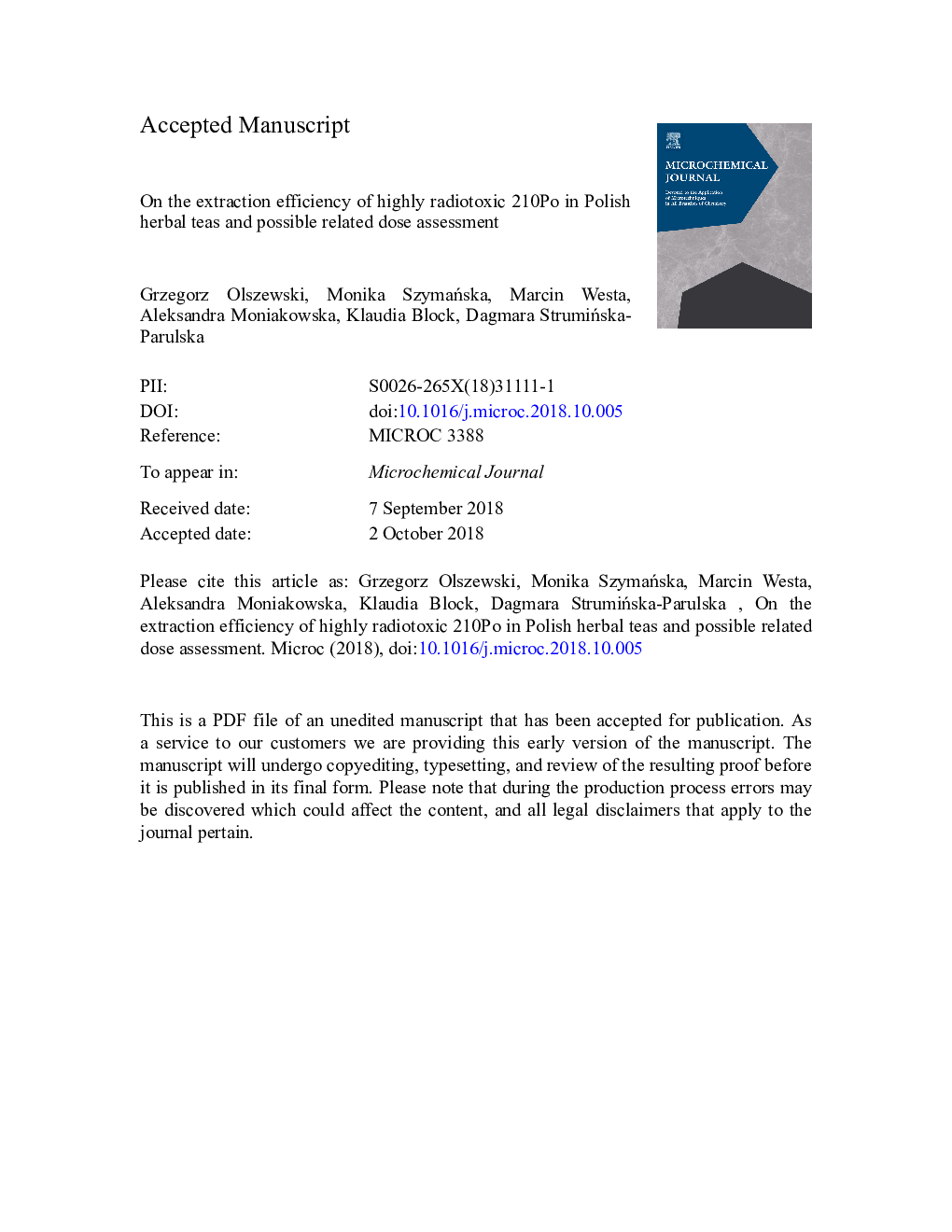| Article ID | Journal | Published Year | Pages | File Type |
|---|---|---|---|---|
| 11031262 | Microchemical Journal | 2019 | 19 Pages |
Abstract
Presented are results of a study on 210Po extraction efficiency in Polish herbal teas and risk to the human consumer due to exposure from highly radiotoxic, carcinogenic decay particles emitted by 210Po. 12 most popular commercially available Polish herbal teas, as well as their infusions in tap and filtered water, were analyzed and 210Po activity concentrations were calculated. The results of 210Po activity determination in dried plants were from 2.11â¯Â±â¯0.09 for milk thistle to 33.7â¯Â±â¯0.4â¯Bq·kgâ1 dry wt. for cistus what equaled 4.21â¯Â±â¯0.18 for milk thistle and 43.8â¯Â±â¯0.5â¯mBq per one teabag. The extraction efficiencies into tap water ranged from 4.93â¯Â±â¯0.39 for lime to 27.4â¯Â±â¯1.4% for elderberry, while for filtered water were between 7.55â¯Â±â¯0.47 for lime and 20.3â¯Â±â¯1.1% for elderberry. There were no statistically significant differences between both extractions and no correlation between 210Po extraction efficiency and 210Po activity in dried herbs. The studies indicated the analyzed herbal teas consumption should not contribute significantly to the annual effective radiation dose in Poland.
Related Topics
Physical Sciences and Engineering
Chemistry
Analytical Chemistry
Authors
Grzegorz Olszewski, Monika SzymaÅska, Marcin Westa, Aleksandra Moniakowska, Klaudia Block, Dagmara StrumiÅska-Parulska,
